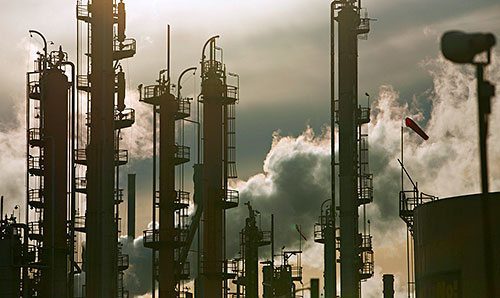Australia can meet its 2030 emissions target without an Emissions Intensity Scheme (EIS), however, deeper emissions cuts from industrial facilities will be needed to balance the loss of abatement from the power sector.
A new report by RepuTex, released on Monday, indicates that while the government has ruled out an EIS, the ongoing operation of the federal Renewable Energy Target (RET) – and state renewable energy targets – will continue to drive the decarbonisation of the power sector.

According to RepuTex, renewable energy targets in the ACT, Queensland, South Australia and Victoria will drive 55 Terrawatt hours (TWh) of new renewable capacity by 2030, equivalent to increasing the federal RET to 35 per cent by 2030, up from approximately 23 per cent by 2020.
This will deliver around 200 million tonnes (Mt) of emissions reductions by 2030 – or 20 per cent of Australia’s emissions reduction task under the Paris Agreement. To meet its target, Australia must reduce emissions by 990 Mt by 2030, with government figures projecting a 10 per cent increase in emissions from 2016 to 2030 under current policy.
In the absence of federal action, state policy is emerging as a key instrument to meet Australia’s emissions target and drive new investment.
We are seeing a more decentralised climate policy approach, with the states developing their own mechanisms to support their targets and capture new renewable energy investment.
In the absence of a federal policy framework, state actions are likely to drive large-scale emissions reductions. We would therefore see the states as the dominant driver of the national energy and climate debate.
With no EIS for the power sector to be considered by the federal government as part of its climate policy review, the RepuTex report indicates that the government’s remaining policies will need to be more heavily relied upon to meet Australia 2030 emissions target – such as new vehicle efficiency regulation, the Emissions Reduction Fund (ERF), and the safeguard mechanism.
Of these, RepuTex modelling indicates that the safeguard scheme is likely to emerge as a critical policy component.
With an EIS off the table, and no extension of the RET, the government has a limited number of policy levers to meet its 2030 target.
New vehicle efficiency standards are likely to have a moderate impact, while the ERF has potential to drive land-sector investment, however, any top-up is expected to be limited by budget constraints.
That leaves the safeguard mechanism as a key policy cog for the government.
According to RepuTex, achievable adjustments to the government’s remaining policies, such as the continuation of the current RET, new vehicle efficiency regulation, and the extension of funding for the ERF, could deliver an estimated 580 Mt of emissions reductions by 2030 – or 58 per cent of Australia’s emissions reduction task.
This would leave a shortfall of 410 million tonnes to meet Australia’s 2030 target, which may be achieved by modest reductions in baselines under the safeguard mechanism.
We estimate a decline in baselines of as little as 1 per cent may be enough to meet any shortfall to the target – which is a modest task for industry.
Notably, if companies are able to buy domestic and international offsets, industry would be able to contribute emissions reductions at least cost.
The modelling comes with a caution, however, warning that winding back more policy – such as state renewable energy targets or ERF funding – would increase the size of the task for other sectors of the economy.
Ruling out more policy, such as state RET schemes or ERF funding, will simply increase the role industry may have to play to meet the 2030 target, with baselines scaling up or down under policy and coverage conditions.
This reinforces the zero-sum nature of Australian climate policy – the exclusion of one policy lever is fine – but losses will need to be balanced elsewhere in the economy.
The government’s climate policy review will commence in February with the release of a discussion paper and consultation process, concluding by the end of 2017.
Hugh Grossman is executive director of RepuTex, Australia’s largest energy and emissions market analyst, with customers at over 150 power, energy, metals, mining, land-use, waste, financials and government agencies







